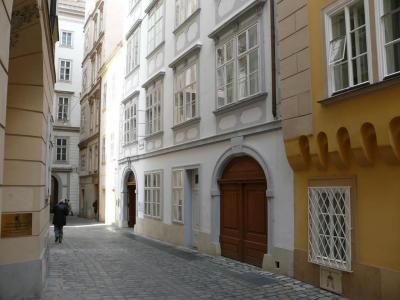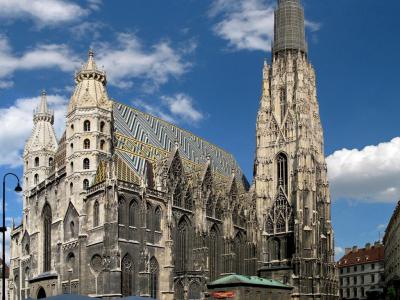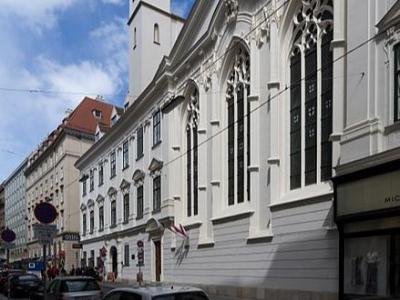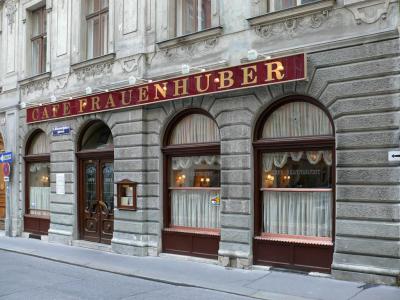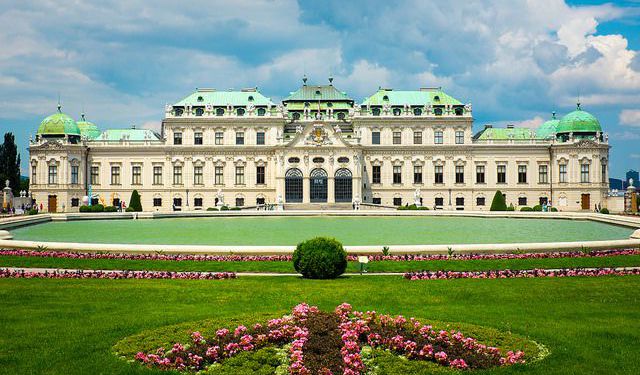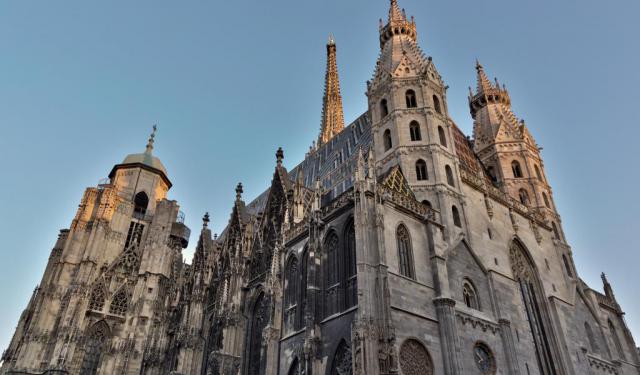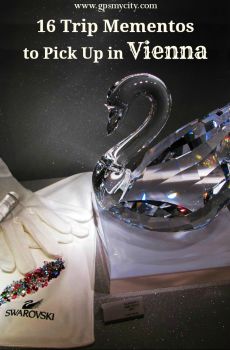
Mozart Walking Tour (Self Guided), Vienna
Wolfgang Amadeus Mozart spent a significant portion of his life in Vienna. Here, he achieved recognition, and the city holds enormous historical and cultural significance for his legacy. Mozart first visited Vienna as a child prodigy in 1762, and in 1781 came here to stay.
The city met the composer with a vibrant and cosmopolitan atmosphere brought about by some of the top musicians and artists of the time. In Vienna, Mozart got acquainted with the influential figures like Joseph Haydn, Ludwig van Beethoven, and Antonio Salieri, who played crucial roles in shaping the Viennese classical music scene.
Domgasse 5, now known as Mozarthaus Vienna, is the only remaining residence of Mozart in the city. Today, it serves as a museum. The magnificent St Stephen's Cathedral (Stephansdom) also played an essential role in Mozart's life. He got married here in 1782, and his famous "Coronation Mass" was first performed in this church in 1792.
Other locations in Vienna closely or loosely associated with Mozart include the Church of the Teutonic Order (Deutschordenskirche), Cafe Frauenhuber, St Michael's Church (Michaelerkirche), and, of course, the Mozart Monument.
Despite his talent and success, Mozart often faced financial challenges. Sadly, his life was cut short in Vienna in 1791 when he died aged only 35. While Mozart's death may have been relatively overlooked initially, his music gained increasing recognition and reverence in the years that followed, solidifying his place as one of the greatest composers in history.
The locations gathered in this tour offer insights into Mozart's life and connection to Vienna. Exploring them can provide a deeper understanding of his works and the cultural milieu in which he thrived.
The city met the composer with a vibrant and cosmopolitan atmosphere brought about by some of the top musicians and artists of the time. In Vienna, Mozart got acquainted with the influential figures like Joseph Haydn, Ludwig van Beethoven, and Antonio Salieri, who played crucial roles in shaping the Viennese classical music scene.
Domgasse 5, now known as Mozarthaus Vienna, is the only remaining residence of Mozart in the city. Today, it serves as a museum. The magnificent St Stephen's Cathedral (Stephansdom) also played an essential role in Mozart's life. He got married here in 1782, and his famous "Coronation Mass" was first performed in this church in 1792.
Other locations in Vienna closely or loosely associated with Mozart include the Church of the Teutonic Order (Deutschordenskirche), Cafe Frauenhuber, St Michael's Church (Michaelerkirche), and, of course, the Mozart Monument.
Despite his talent and success, Mozart often faced financial challenges. Sadly, his life was cut short in Vienna in 1791 when he died aged only 35. While Mozart's death may have been relatively overlooked initially, his music gained increasing recognition and reverence in the years that followed, solidifying his place as one of the greatest composers in history.
The locations gathered in this tour offer insights into Mozart's life and connection to Vienna. Exploring them can provide a deeper understanding of his works and the cultural milieu in which he thrived.
How it works: Download the app "GPSmyCity: Walks in 1K+ Cities" from Apple App Store or Google Play Store to your mobile phone or tablet. The app turns your mobile device into a personal tour guide and its built-in GPS navigation functions guide you from one tour stop to next. The app works offline, so no data plan is needed when traveling abroad.
Mozart Walking Tour Map
Guide Name: Mozart Walking Tour
Guide Location: Austria » Vienna (See other walking tours in Vienna)
Guide Type: Self-guided Walking Tour (Sightseeing)
# of Attractions: 6
Tour Duration: 1 Hour(s)
Travel Distance: 2.0 Km or 1.2 Miles
Author: leticia
Sight(s) Featured in This Guide:
Guide Location: Austria » Vienna (See other walking tours in Vienna)
Guide Type: Self-guided Walking Tour (Sightseeing)
# of Attractions: 6
Tour Duration: 1 Hour(s)
Travel Distance: 2.0 Km or 1.2 Miles
Author: leticia
Sight(s) Featured in This Guide:
- Mozarthaus (Mozart's Former Residence)
- Stephansdom (St. Stephen's Cathedral)
- Church of the Teutonic Order (Deutschordenskirche)
- Cafe Frauenhuber
- Michaelerkirche (St. Michael's Church)
- Mozart Monument
1) Mozarthaus (Mozart's Former Residence)
Out of total 11 of Mozart's abodes in Vienna, Mozarthaus at Domgasse 5 is the only one that still exists – restored in 2006 to commemorate his 250th anniversary – and is where the composer reportedly spent his happiest years. Perhaps this explains the significant number of compositions Mozart created while here, including the exquisite Haydn-dedicated quartets, a handful of piano concertos and "The Marriage of Figaro" and "Don Giovanni" operas. From this point on it was all downhill for Mozart, who then moved to the suburbs due to financial difficulties.
Unlike some other famous house-museums in Vienna, this one has none of the original furnishings to see; instead, it focuses on the composer's genius and allows visitors to imagine how the spacious, elegant apartment might have looked. Concerts are regularly staged here, along with some activities for children.
It might be a good idea to take the lift to the 3rd floor and start your way from there downward, exploring Mozart's life as a child prodigy touring all across 18th-century Europe until finally moving from Salzburg to Vienna. His vices – namely: womanizing, gambling and ability to waste excessive amounts of money – lend a spicy edge. The 2nd floor deals with different versions of his operatic works (some played in sync), while the 1st floor focuses on the years that Mozart lived at this exact address.
Why You Should Visit:
To explore the life and work of the musical genius in a unique setting in the heart of Vienna. Nowhere else did Mozart compose more music. Visitors can see not only the historical apartment but also an extensive presentation of major works by Mozart and of the times in which he lived.
Tip:
Save on the entrance fee by combining your ticket with either Haus der Musik or Dom Museum Wien.
Unlike some other famous house-museums in Vienna, this one has none of the original furnishings to see; instead, it focuses on the composer's genius and allows visitors to imagine how the spacious, elegant apartment might have looked. Concerts are regularly staged here, along with some activities for children.
It might be a good idea to take the lift to the 3rd floor and start your way from there downward, exploring Mozart's life as a child prodigy touring all across 18th-century Europe until finally moving from Salzburg to Vienna. His vices – namely: womanizing, gambling and ability to waste excessive amounts of money – lend a spicy edge. The 2nd floor deals with different versions of his operatic works (some played in sync), while the 1st floor focuses on the years that Mozart lived at this exact address.
Why You Should Visit:
To explore the life and work of the musical genius in a unique setting in the heart of Vienna. Nowhere else did Mozart compose more music. Visitors can see not only the historical apartment but also an extensive presentation of major works by Mozart and of the times in which he lived.
Tip:
Save on the entrance fee by combining your ticket with either Haus der Musik or Dom Museum Wien.
2) Stephansdom (St. Stephen's Cathedral) (must see)
With its intricately patterned tiled roof, the imposing Gothic cathedral of Saint Stephen's (Stephansdom) is a prime landmark inside Vienna's old city center, having stood watch over the place for nearly 700 years. Its distinctive south tower rises to an impressive 445 feet and previously has served as the main observation and command post for the city's walled defense, for which purpose it even contained an apartment for watchmen who, until 1955, manned the tower at night and rang the bells if a fire was spotted. There was to be a twin north tower, but for several reasons, it ended up being just half the size and of a different design.
The views from the Watch Room, at the top, are surely worth climbing the 343 steps, otherwise you can take a lift up to a viewing platform on the shorter tower, home to the massive Pummerin ("Boomer") Bell – the largest in Austria, originally cast from melted-down cannons abandoned by the Turks while fleeing Vienna in 1683.
High points of the interior are the gorgeous vaulting of the Albertine Chapel, the stone pulpit (a masterwork of late Gothic sculpture), canopies or baldachins over many of the side altars, and a most spectacular Renaissance work – Friedrich III's tomb. You also won't want to miss the 14th century catacombs and the treasury where some of the cathedral's most valuable objects are displayed. Some of them can only be seen on a guided tour, such as a red marble sepulcher sculpted in 1467-1513, the 16th-century pulpit, a Gothic winged altar from the 1440s, and the tomb of Prince Eugene of Savoy dated 1754.
Visit Saint Stephen's Cathedral and you'll be standing in the same church in which Joseph Haydn once sang as a choir boy until his voice broke, and where Johann Strauss married both of his wives, Henrietta Treffz and Angelika Dittrich. A memorial tablet gives a detailed account of Wolfgang Amadeus Mozart's relationship with the cathedral, including that of him being appointed an adjunct music director here shortly before his death. This was his parish church when he lived at the Figaro House and he was married here; two of his children were also baptized at Saint Stephen's, and his funeral was held in the Chapel of the Cross inside.
Why You Should Visit:
While incredible architecture is rather commonplace in Vienna, this majestic Roman-Gothic masterpiece is absolutely unmistakable and not to be missed.
Tip:
Be sure to make a loop around the structure as there are many interesting details still visible on the outside walls.
The views from the Watch Room, at the top, are surely worth climbing the 343 steps, otherwise you can take a lift up to a viewing platform on the shorter tower, home to the massive Pummerin ("Boomer") Bell – the largest in Austria, originally cast from melted-down cannons abandoned by the Turks while fleeing Vienna in 1683.
High points of the interior are the gorgeous vaulting of the Albertine Chapel, the stone pulpit (a masterwork of late Gothic sculpture), canopies or baldachins over many of the side altars, and a most spectacular Renaissance work – Friedrich III's tomb. You also won't want to miss the 14th century catacombs and the treasury where some of the cathedral's most valuable objects are displayed. Some of them can only be seen on a guided tour, such as a red marble sepulcher sculpted in 1467-1513, the 16th-century pulpit, a Gothic winged altar from the 1440s, and the tomb of Prince Eugene of Savoy dated 1754.
Visit Saint Stephen's Cathedral and you'll be standing in the same church in which Joseph Haydn once sang as a choir boy until his voice broke, and where Johann Strauss married both of his wives, Henrietta Treffz and Angelika Dittrich. A memorial tablet gives a detailed account of Wolfgang Amadeus Mozart's relationship with the cathedral, including that of him being appointed an adjunct music director here shortly before his death. This was his parish church when he lived at the Figaro House and he was married here; two of his children were also baptized at Saint Stephen's, and his funeral was held in the Chapel of the Cross inside.
Why You Should Visit:
While incredible architecture is rather commonplace in Vienna, this majestic Roman-Gothic masterpiece is absolutely unmistakable and not to be missed.
Tip:
Be sure to make a loop around the structure as there are many interesting details still visible on the outside walls.
3) Church of the Teutonic Order (Deutschordenskirche)
Tucked away in a side street not far from Saint Stephen's Cathedral, this is a small, quirky and lesser visited church belonging to the Order of Teutonic Knights – one of the three main military-religious orders to emerge during the Crusades in the 12th century. The building never fell prey to the baroque frenzy that swept the city after the Counter-Reformation, so you can see it pretty much in its original form – a Gothic church decorated with the Order's numerous coats of arms.
Enter through the arched gateway into the cobbled courtyard – a peaceful spot adorned with ivy and flower boxes, where Johannes Brahms spent the best part of 1863–65, though inevitably it's Mozart who gets a plaque for his brief sojourn here in the spring of 1781 (March 10th to May 2nd). Despite the span of only a few weeks, this was to be a crucial period for the then 25-year-old composer's future, who lived in Salzburg and was in the service of that city-state's ruler, Prince-Archbishop Count Colloredo. During a Vienna visit by the Archbishop and his retinue, Mozart had a row with him and resigned his commission, instead deciding to stay in Vienna where he worked his way up from an unemployed artist to a respected and prosperous pianist, composer and music teacher.
Before you leave, pop inside the ground floor's Sala Terrena to admire the Baroque trompe l'oeil murals of flowers, animal scenes, statues and carousing gods; the room was where Mozart gave concerts for the Viennese aristocracy (even some of his premieres were at this very place) and is now used for concerts of his works.
Tip:
The treasury – one of the oldest in Vienna – is open less frequently than the church, but well worth checking out for a small fee as it displays various fine collections acquired by the Order's Grand Masters over the centuries. Apparently, too, you can stay in the adjacent "hotel" owned by the Order – one of the cheapest places in central Vienna, albeit cash-only and somewhat hidden (you'd have go up some stairs to find it).
Enter through the arched gateway into the cobbled courtyard – a peaceful spot adorned with ivy and flower boxes, where Johannes Brahms spent the best part of 1863–65, though inevitably it's Mozart who gets a plaque for his brief sojourn here in the spring of 1781 (March 10th to May 2nd). Despite the span of only a few weeks, this was to be a crucial period for the then 25-year-old composer's future, who lived in Salzburg and was in the service of that city-state's ruler, Prince-Archbishop Count Colloredo. During a Vienna visit by the Archbishop and his retinue, Mozart had a row with him and resigned his commission, instead deciding to stay in Vienna where he worked his way up from an unemployed artist to a respected and prosperous pianist, composer and music teacher.
Before you leave, pop inside the ground floor's Sala Terrena to admire the Baroque trompe l'oeil murals of flowers, animal scenes, statues and carousing gods; the room was where Mozart gave concerts for the Viennese aristocracy (even some of his premieres were at this very place) and is now used for concerts of his works.
Tip:
The treasury – one of the oldest in Vienna – is open less frequently than the church, but well worth checking out for a small fee as it displays various fine collections acquired by the Order's Grand Masters over the centuries. Apparently, too, you can stay in the adjacent "hotel" owned by the Order – one of the cheapest places in central Vienna, albeit cash-only and somewhat hidden (you'd have go up some stairs to find it).
4) Cafe Frauenhuber
Vienna's oldest café, which has been going since 1824, is, as you'd likely expect, unchanged and traditional: vaulted ceiling, huge chandeliers, deep burgundy upholstery, newspapers on racks, classically attired waitstaff and no recorded music. One little change is that these days they have an outside terrace, but there is still one other good reason to come: the café's storied history, including performances by Mozart and Beethoven. The former gave his last concert in public here on March 4th, 1791 (the famous Piano Concerto No. 27), while the latter was a regular as patron and pianist, having usually sat in the back room which is easily visible from the front.
The waiters expect you to walk in and seat yourself – something that is unexpected to foreign visitors who think that such beautiful "period restaurant" must require that they be seated. No, no, go ahead and take the menu, sit down and try the usual fine Viennese fare of schnitzel, beef goulash, and either Kaiserschmarr or Haustorte for dessert. As well as these, they serve good breakfast and a range of vegetarian dishes.
The waiters expect you to walk in and seat yourself – something that is unexpected to foreign visitors who think that such beautiful "period restaurant" must require that they be seated. No, no, go ahead and take the menu, sit down and try the usual fine Viennese fare of schnitzel, beef goulash, and either Kaiserschmarr or Haustorte for dessert. As well as these, they serve good breakfast and a range of vegetarian dishes.
5) Michaelerkirche (St. Michael's Church)
The oldest building on Michaelerplatz, and the source of its name, Michaelerkirche was first built in the 13th century, though the Neoclassical facade, added in 1792, somewhat obscures this fact. The high polygonal Gothic bell tower from the 16th century may be seen from far away, having become one of the Inner City's symbols. Above the entrance, on top of the pediment, resting on Doric columns, stands a group with winged angels and Saint Michael slaying Lucifer (1725). These sculptural figures were executed by the Italian sculptor Lorenzo Mattielli, who also sculpted the Hercules figures at the Hofburg entrance, just opposite the church.
Inside, the church retains its plain Gothic origins, but sculptor sculptor Karl Georg Merville's "Fall of Angels" steals the show: a monumental stucco alabaster Rococo sculpture, tumbling from the ceiling above the high altar. The gilded pipe organ (1714) – Vienna's largest Baroque organ – is very fine; it was once played by the 17-year-old Joseph Haydn, who lived next door in a small attic room. The very first playing of Mozart's unfinished "Requiem" first took place here on December 10, 1791, in a requiem service for the composer. Just to the right of the church's entrance, you will find two dark reliefs commemorating said performance.
Off the north choir is the entrance to a huge crypt, discovered by U.S. soldiers in 1945, when they forced open its doors, which had been sealed for 150 years. Found lying undisturbed for centuries were hundreds of mummified former wealthy parishioners, clothed in their burial finery that was perfectly preserved by the rarefied air within.
Inside, the church retains its plain Gothic origins, but sculptor sculptor Karl Georg Merville's "Fall of Angels" steals the show: a monumental stucco alabaster Rococo sculpture, tumbling from the ceiling above the high altar. The gilded pipe organ (1714) – Vienna's largest Baroque organ – is very fine; it was once played by the 17-year-old Joseph Haydn, who lived next door in a small attic room. The very first playing of Mozart's unfinished "Requiem" first took place here on December 10, 1791, in a requiem service for the composer. Just to the right of the church's entrance, you will find two dark reliefs commemorating said performance.
Off the north choir is the entrance to a huge crypt, discovered by U.S. soldiers in 1945, when they forced open its doors, which had been sealed for 150 years. Found lying undisturbed for centuries were hundreds of mummified former wealthy parishioners, clothed in their burial finery that was perfectly preserved by the rarefied air within.
6) Mozart Monument
In the quiet oasis of Burggarten stands an elegant statue of Mozart, moved here from the Albertinaplatz after the war, when the city's charred ruins were being rebuilt. This intimate place is an excellent spot for Mozart lovers to have a photo with the 7.5-meter-high statue made by architect Karl König (1841–1915) and sculptor Viktor Tilgner (1844–96) which features Mozart with a music stand. The putti on the socle, representing the power of Mozart's music, are stylistically suggestive of Art Nouveau.
On the front, a relief refers to two scenes of Mozart's opera "Don Giovanni", while above it are a stone keyboard, masks, instruments and music-making cherubs. The rear side relief shows the six-year-old prodigy at the piano, with beloved sister Maria Anna ("Nannerl") and father Leopold by his side. Unfortunately, the siblings' partnership would experience a sudden and severe fracture in 1769, when Nannerl turned 18, meaning she was of marriageable age, which, as far as father Leopold was concerned, signaled the end of her performing career. As father and son continued to travel Europe and play to distinguished audiences, Nannerl remained at home with her mother.
From spring to autumn, the statue is surrounded by a small manicured lawn with a trebleclef-shaped flower bed. The steeples of Saint Stephen's and the Augustinerkirche, old trees and blooming shrubs add to the atmosphere. Noteworthy, also, is the nice sculpture of famous philosopher Goethe in the same area.
On the front, a relief refers to two scenes of Mozart's opera "Don Giovanni", while above it are a stone keyboard, masks, instruments and music-making cherubs. The rear side relief shows the six-year-old prodigy at the piano, with beloved sister Maria Anna ("Nannerl") and father Leopold by his side. Unfortunately, the siblings' partnership would experience a sudden and severe fracture in 1769, when Nannerl turned 18, meaning she was of marriageable age, which, as far as father Leopold was concerned, signaled the end of her performing career. As father and son continued to travel Europe and play to distinguished audiences, Nannerl remained at home with her mother.
From spring to autumn, the statue is surrounded by a small manicured lawn with a trebleclef-shaped flower bed. The steeples of Saint Stephen's and the Augustinerkirche, old trees and blooming shrubs add to the atmosphere. Noteworthy, also, is the nice sculpture of famous philosopher Goethe in the same area.
Walking Tours in Vienna, Austria
Create Your Own Walk in Vienna
Creating your own self-guided walk in Vienna is easy and fun. Choose the city attractions that you want to see and a walk route map will be created just for you. You can even set your hotel as the start point of the walk.
Vienna's Historical Music Venues
Austria is synonymous with classical music almost to the point of obsession, and to call Vienna the "Musical Capital of the World" would be hardly an exaggeration. Indeed, over the past centuries, the city served as the home and workplace for many great musicians like Wolfgang Amadeus Mozart, Ludwig van Beethoven, Johann Strauss, Joseph Haydn, Franz Schubert, and others.
Among the... view more
Tour Duration: 2 Hour(s)
Travel Distance: 3.0 Km or 1.9 Miles
Among the... view more
Tour Duration: 2 Hour(s)
Travel Distance: 3.0 Km or 1.9 Miles
Vienna's Art Nouveau Architecture Tour I
Among the plethora of other things, the capital of Austria, Vienna, is renowned for its contribution to Art Nouveau – the popular art movement emerged and flourished at the turn of the 20th century. Stemming from it the Viennese Secession movement, also known as the Austrian Art Nouveau, or Jugendstil (in German), gave rise to a number of architectural marvels.
By far the most colorful of... view more
Tour Duration: 2 Hour(s)
Travel Distance: 3.4 Km or 2.1 Miles
By far the most colorful of... view more
Tour Duration: 2 Hour(s)
Travel Distance: 3.4 Km or 2.1 Miles
Vienna Introduction Walking Tour II
Vienna, the former capital of the once mighty Austro-Hungarian Empire, is the second largest city in the German-speaking world after Berlin. Steeped in history, today's Vienna is still much revered for its cultural grandeur. The abundance of it, manifested in imperial palaces, diverse museums, and historic churches, beckons annually over 6 million guests from around the world.
One of the... view more
Tour Duration: 1 Hour(s)
Travel Distance: 2.7 Km or 1.7 Miles
One of the... view more
Tour Duration: 1 Hour(s)
Travel Distance: 2.7 Km or 1.7 Miles
Vienna Introduction Walking Tour I
A city of green parks, opulent architecture, elegant shopping, crowded theaters, and boulevards for leisurely sauntering — Austria's capital Vienna is rightfully regarded as one of the most beautiful cities in Europe. The origin of its name is subject to a debate in which, some say, it came from vedunia ("forest stream"), which subsequently produced the New High German “wien”... view more
Tour Duration: 2 Hour(s)
Travel Distance: 1.8 Km or 1.1 Miles
Tour Duration: 2 Hour(s)
Travel Distance: 1.8 Km or 1.1 Miles
Famous Homes of Vienna
Throughout centuries, the Austrian capital has been home to numerous famous individuals, from creative people of arts to thinkers, scientists, and politicians. Vienna's illustrious history is closely intertwined with the abodes of its celebrated residents, where artistic virtuosos and luminaries of their time found solace and inspiration.
The often modest apartments of Vienna's famous... view more
Tour Duration: 2 Hour(s)
Travel Distance: 3.9 Km or 2.4 Miles
The often modest apartments of Vienna's famous... view more
Tour Duration: 2 Hour(s)
Travel Distance: 3.9 Km or 2.4 Miles
Old Town Churches Walking Tour
"Vienna is the city of miracles and music" – Whoever said that must have emphasized Vienna's close association with the Christian faith. The intertwining of Christian heritage and artistry in the Austrian capital finds expression primarily in its magnificent churches.
Sitting at "the crossroads of Christian traditions", Vienna is home to various Christian... view more
Tour Duration: 2 Hour(s)
Travel Distance: 3.9 Km or 2.4 Miles
Sitting at "the crossroads of Christian traditions", Vienna is home to various Christian... view more
Tour Duration: 2 Hour(s)
Travel Distance: 3.9 Km or 2.4 Miles
Useful Travel Guides for Planning Your Trip
7 Ultimately Austrian Foods to Taste in Vienna
Once the center of the vast Hapsburg Empire, stretched from France in the West to Russia in the East, Austria has embraced many ethnic influences in its cuisine over the course of centuries. Many of the country's distinctive dishes reflect its multinational heritage. Coffee culture, for...
Top 16 Austrian Things to Buy in Vienna
Vienna stool, Viennese schnitzel, Viennese waltz, Vienna sausage, Viennese apple strudel... There's so much Vienna to it, that you might think you've heard it all. Luckily, chances are that you haven't and there's much more in store left to be discovered about this fascinating...
The Most Popular Cities
/ view all
